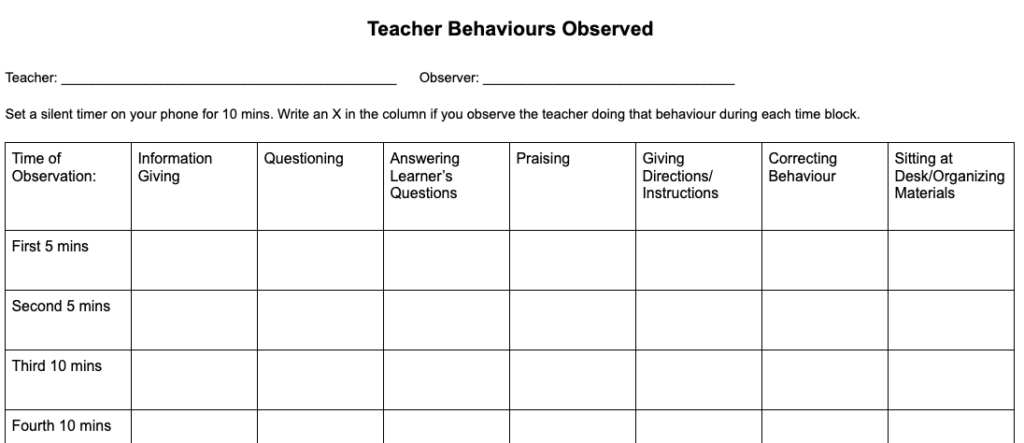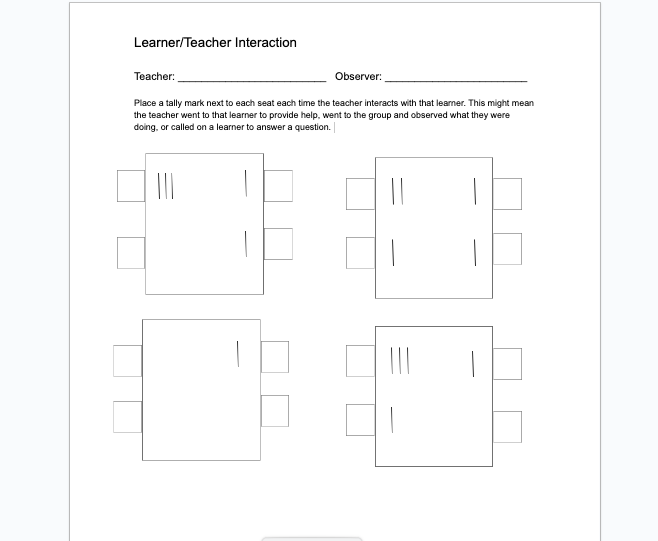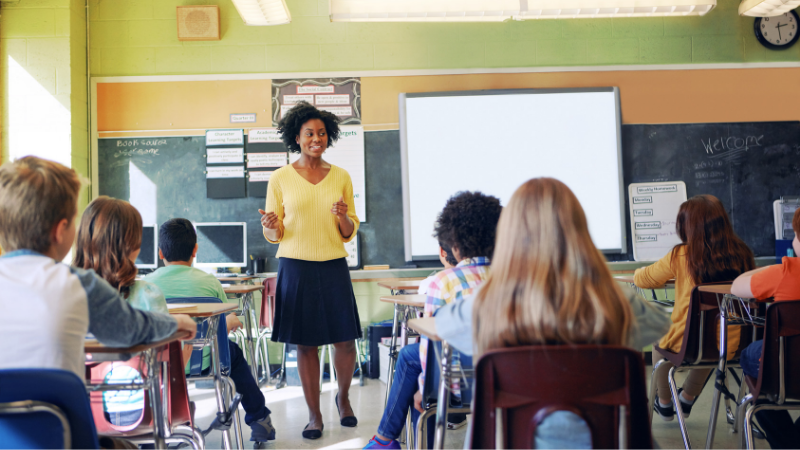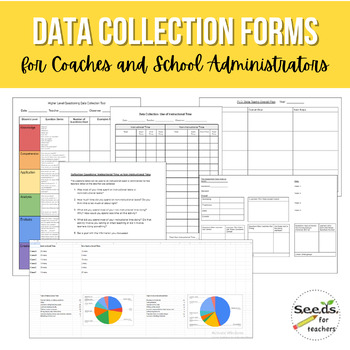More often than not, administrators and teachers try to improve learning by focusing on student test schools or tier interventions. They rarely collect data to support goals related to how teachers are teaching and the interaction between teachers and students. Data collection allows administrators, school leaders, and educational researchers to assess and evaluate the effectiveness of teaching and learning. By observing teachers in action, they can gather evidence about instructional practices, classroom management, student engagement, and overall teaching quality. This data helps provide constructive feedback to teachers, identify areas for improvement, and support professional development efforts.
Classroom observations, combined with data on student performance, can help educators track individual student progress and identify patterns or trends. By observing teachers’ instructional practices and interactions with students, data collectors can gain a deeper understanding of how teaching strategies impact student learning outcomes. This information can be used to make data-informed decisions about instructional interventions and support systems for struggling students. Here are three tools you can use during informal observations.
Identify Common Teacher Behavior
This tool helps you identify what the teacher is spending most of their time doing and in which part of the lesson. I use a simple table that has seven common actions, or behaviors, the teacher would use during a lesson across the top. On the left side of the table, the lesson is broken down into 5-10 min time slots. The observer would enter the class and have their phone or a watch beside them as they are observing. During the first 5 minutes of the lesson the observer would put an x in the column for each behavior they noticed during those first 5 minutes. If they noticed the teacher sitting at their desk they would mark an x. If the teacher asked students some questions, they would mark an x. After the first 5 minutes are over, the observer will go to the next row/time period. They will again mark an x in the column for each behavior they notice during the next 5 minute time slot. By the end you can make some observations such as: the teacher had to constantly correct behavior, or the teacher only asked questions to students at the beginning of the lesson and not throughout. Next, you’ll be able to help the teacher create some goals.

Observe Teacher and Student Interaction
Teachers don’t often realize that there tend to be table groups or individual learners that “hide” during lessons or or simply ignored by the teacher. We all can remember those students we had who raised their hands to answer every single question. But what about those students who 9/10 times don’t raise their hands? This data collection tool will help you see patterns related to teacher and student interaction. Go into the classroom and draw what the desk arrangement looks like for that classroom. As you observe the lesson, place a tally mark on the drawing to indicate each time the teacher interacts with a specific student. Interactions include calling on the student to answer a question, going over to the student’s desk and providing them help, walking over to a table of students and listening in on their discussion. By the end of the lesson you may have something like the picture below. Unfortunately, in this case it is very clear that the back table in the classroom was almost entirely ignored. That could be for different reasons. I could discuss with the teacher about possible reasons or solutions. Low teacher and student interaction can have a lot of negative impacts on students both academically, emotionally and behavior wise. There are a lot of simple “quick checks” you can do during a lesson to receive feedback from all learners in the class on how they are understanding the lesson.

Observe Off-Task Behavior from Students
This tool can help the teacher get a sense of how engaged the class as a whole is. It can also provide insight on certain students who may have a pattern of getting off task. Several things can occur when students are regularly off task:
Poor academic performance: Students who consistently engage in off-task behavior are likely to fall behind academically. They miss out on important information, instructions, and opportunities for learning, leading to lower grades and a lack of understanding of the material being taught.
Disruption of the learning environment: Off-task behavior can be distracting and disruptive to other students in the class. It can divert their attention away from the lesson, making it harder for them to concentrate and learn effectively. This disruption can lead to a less productive and less engaging learning environment for everyone.
Decreased student engagement: Off-task behavior can indicate a lack of interest or disengagement with the subject matter or the learning environment. Students who are frequently off-task may become bored, unmotivated, or uninterested in what is being taught. This disengagement can hinder their learning progress and overall academic development.
To observe off task behavior you can use the same type of system as for student/ teacher interaction in the photo above. Draw a layout of the student desks in the room. Mark a tally by a student each time you see them get off task. Off task behavior might be playing with something at their desk, looking at a website not related to the assignment, talking to their neighbor or looking out the window. I’m aware that this tool does have limitations. Sometimes a child can appear off task to an outside observe when really they are listening and taking in everything the teacher is saying. However, this isn’t the case with most students and the tool can still be a starting place for understanding the engagement level of your class as a whole.
Get all of these tools along with questions to help you discuss the results and improve learning during PLCs or team meetings in my TPT store. Click the image below.
Hope these tools give you a place to start to improve learning in your school. After collecting data you can discuss the results with your team or a colleague and see how you can set some goals based on the information.

